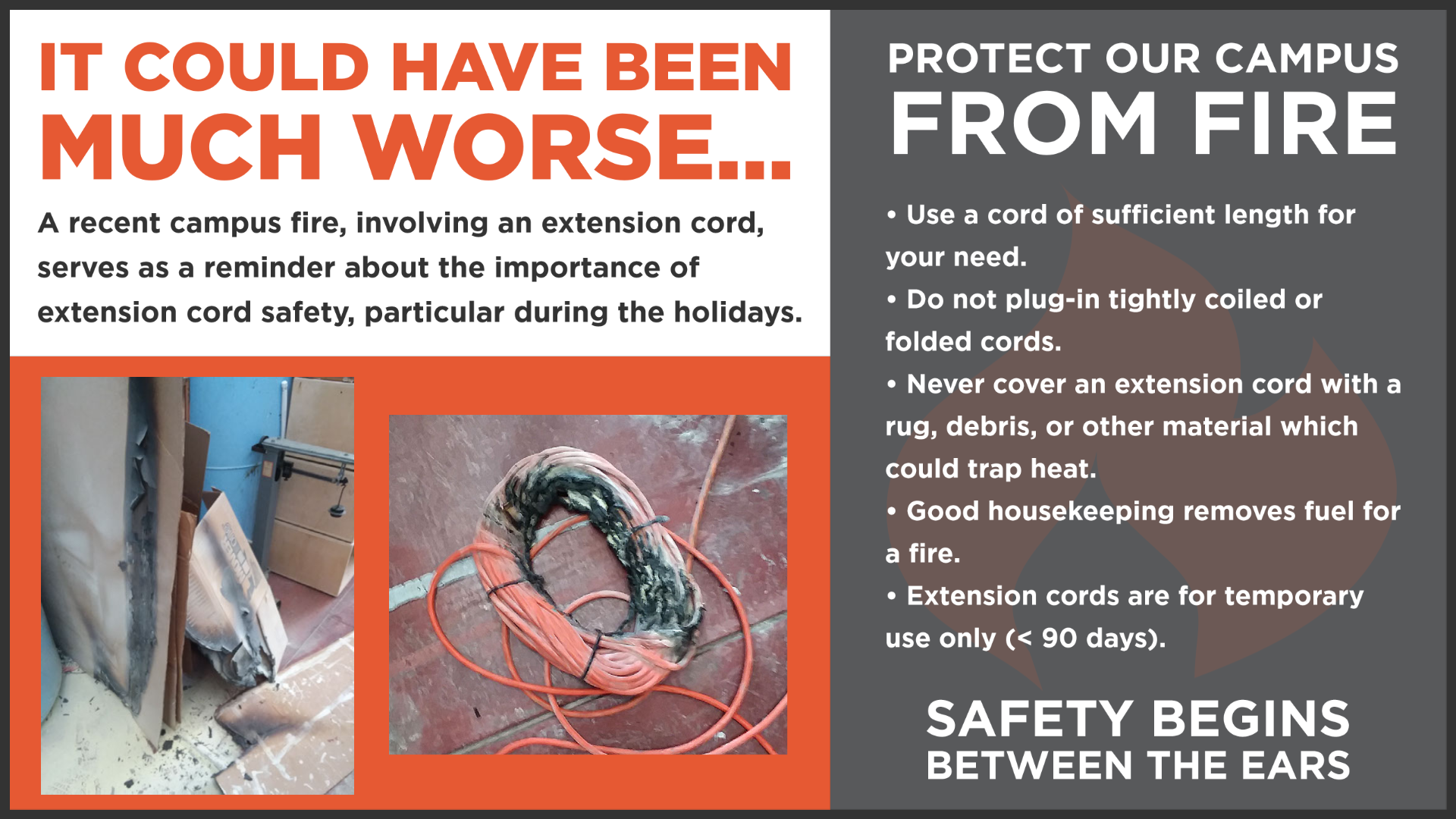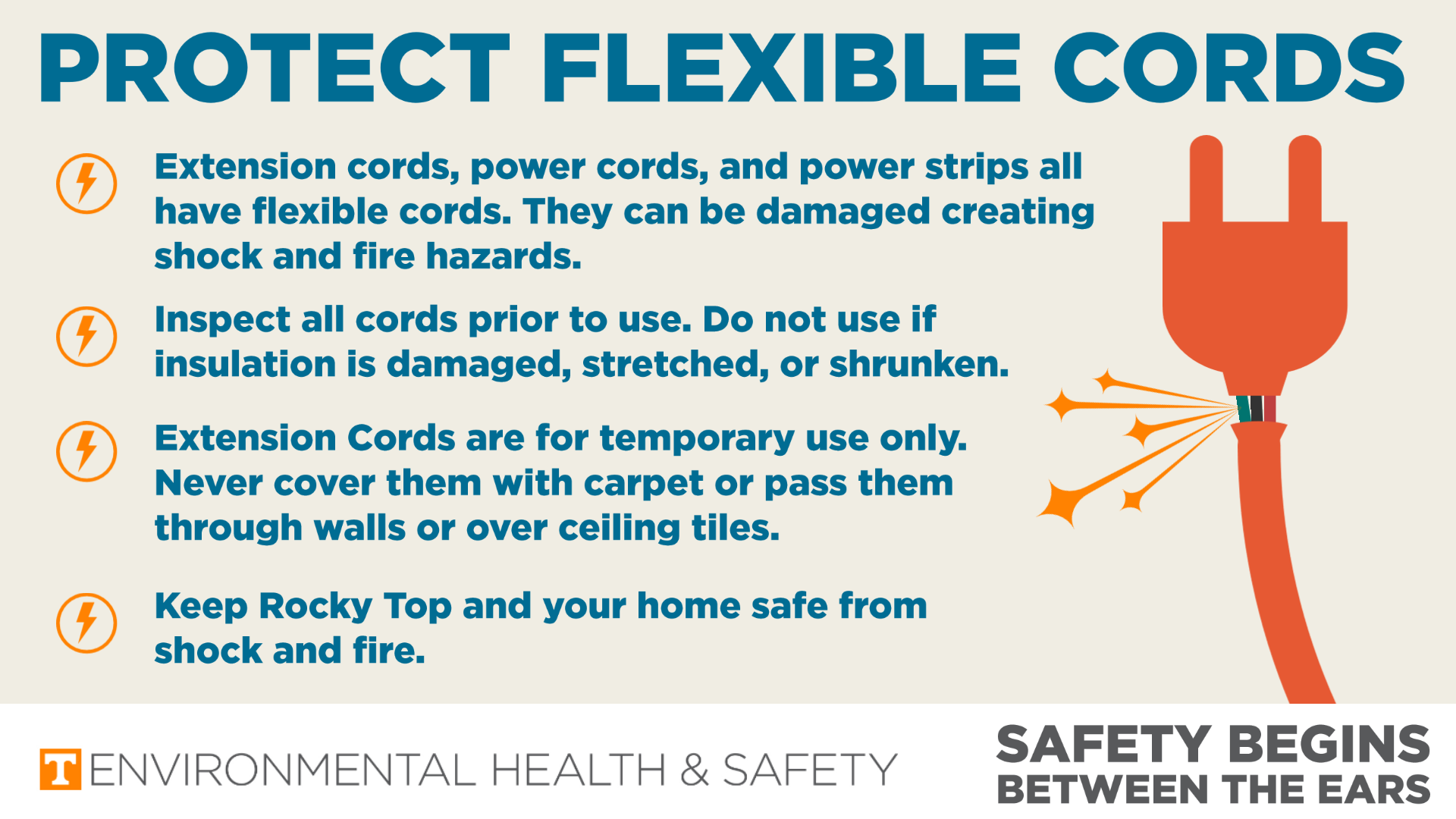EHS reminds all Vols to protect flexible cords on campus. What are flexible cords? When we refer to flexible cords, we mean flexible electrical cords such as the cord and plug used to plug in a coffee maker, or extension cords and power strip cords. Such cords can be damaged by use or misuse. They can be accidentally cut or crushed. They can overheat, causing the insulation to shrink around the internal wires. There are many ways they can be damaged, which can lead to a risk of shock or fire.
A Recent Fire
Recently, UT experienced a fire from a coiled up extension cord store under cardboard boxes. Excessive heat built up that burned through the insulation and the cardboard.

What can you do?
- First realized the risk of damage to flexible cords and the risk of electrical shock or fire.
- Inspect all cords prior to use. Do not use if the insulation is damaged, stretched, or shrunken. Shrunken insulation looks like the outer insulation was shrink-wrapped around the internal wires. The cord may also look twisted. A very common form of insulation damage is the when it pulls away from the plug or other junction as shown in the graphic below.
- Remember that extension cords are for temporary use only. Never cover them with carpet, rugs, or cardboard. Do not pass them through walls or over ceiling tiles.
- Download and share our graphics on this page.
